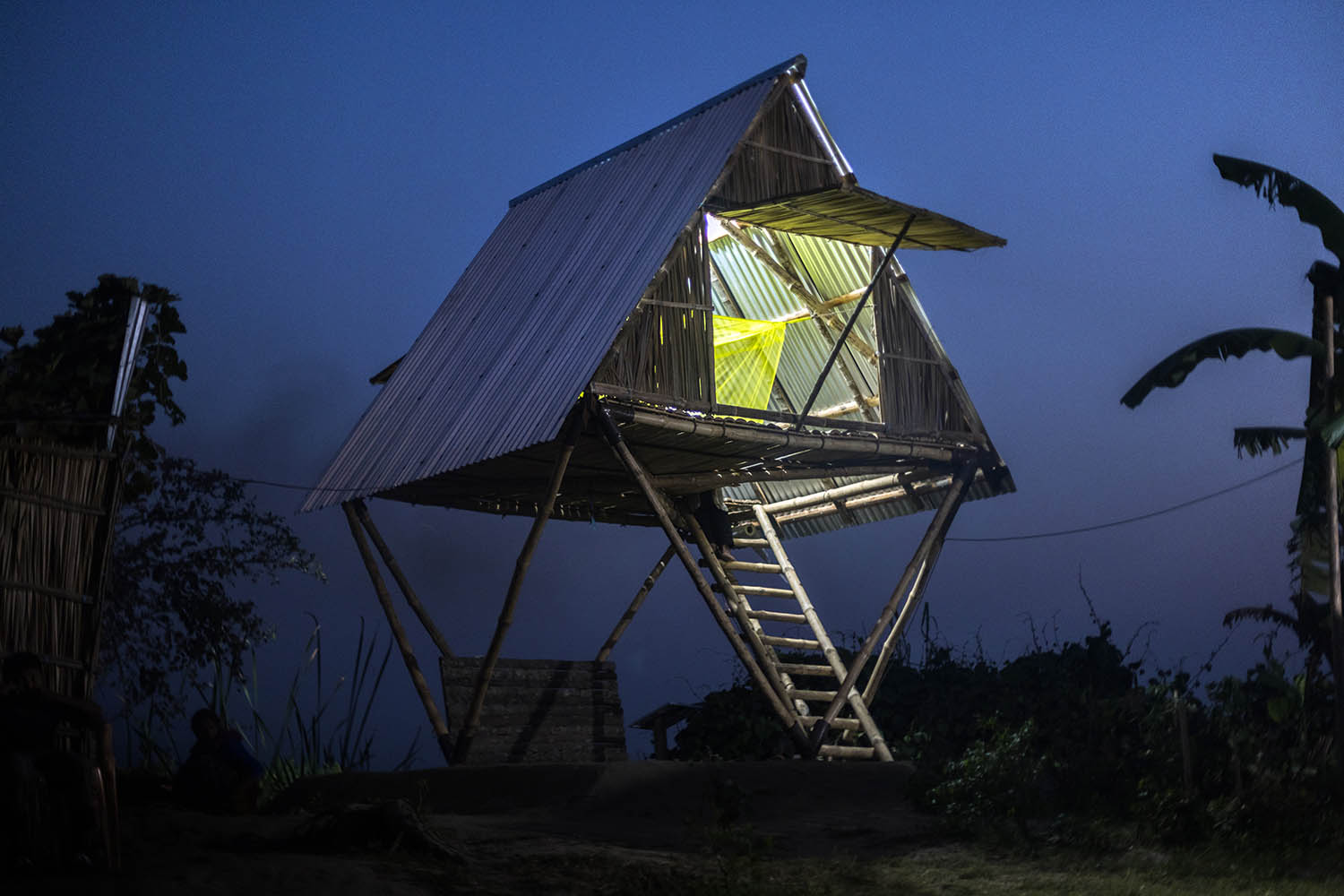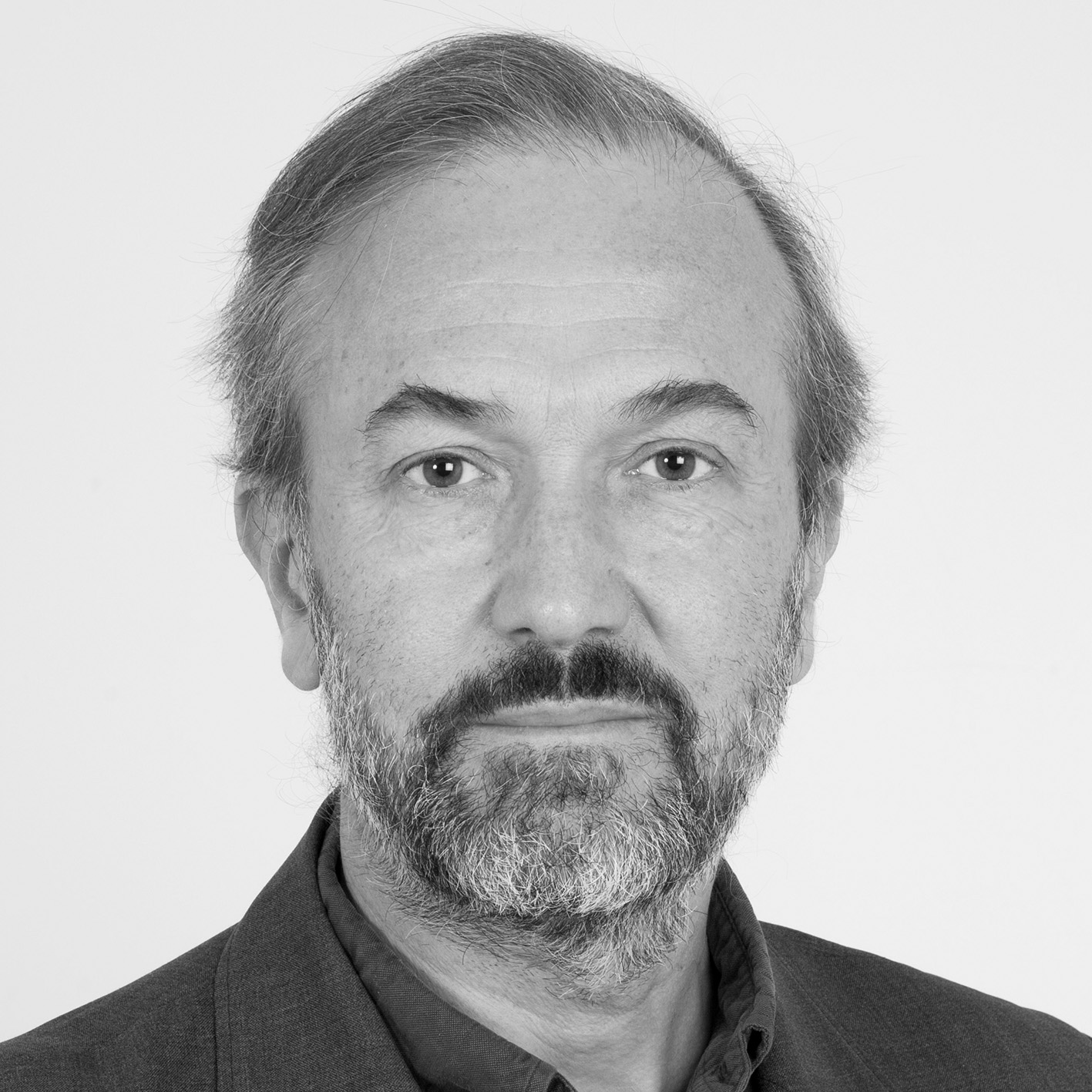Marina Tabassum is an architect who works with the fundamentals of buildings – the ways they are built and of what, their geometric forms, their sensory experiences. “Light, wind, air,” she says, “everything plays a certain role; sound plays a role.” There’s something “archaic” about her projects, to use a word she’s fond of, but they are also rooted in time and place. She makes buildings with local materials and local skills that respond to local weather, in acts of conscious resistance to the glassy, globalised, climate-oblivious towers that go up almost everywhere. She has not until now designed anything outside her native Bangladesh, apart from some internal exhibition installations. “Wherever I work,” she has said, “I must understand that place.”
Alongside the more conventional commissions of a respected architect’s portfolio – a museum, a place of worship, high-quality apartment blocks for property developers – Tabassum and her practice also design shelters with minimal means for the victims of natural and human-made disasters. “There is an overproduction of buildings,” she has said, “but not for the people who really need them” – a situation she would like to remedy. Her work won her a place on Time magazine’s list of the 100 most influential people in 2024. But, she says, sitting in the shady Venice courtyard where we talk during the city’s architecture biennale, “I would rather be inspirational than influential.”
Her pavilion for the Serpentine Gallery, opening next month outside the gallery’s main building in Kensington Gardens in London, the 24th in its annual series of temporary architectural adventures, will be Tabassum’s first building abroad. The fact that it is “there for a short period of time”, she says, makes it easier to make the leap. “You can take that liberty; this is not a building that shapes people’s lives.” As a frequent visitor to London, she also feels she knows the city well enough.
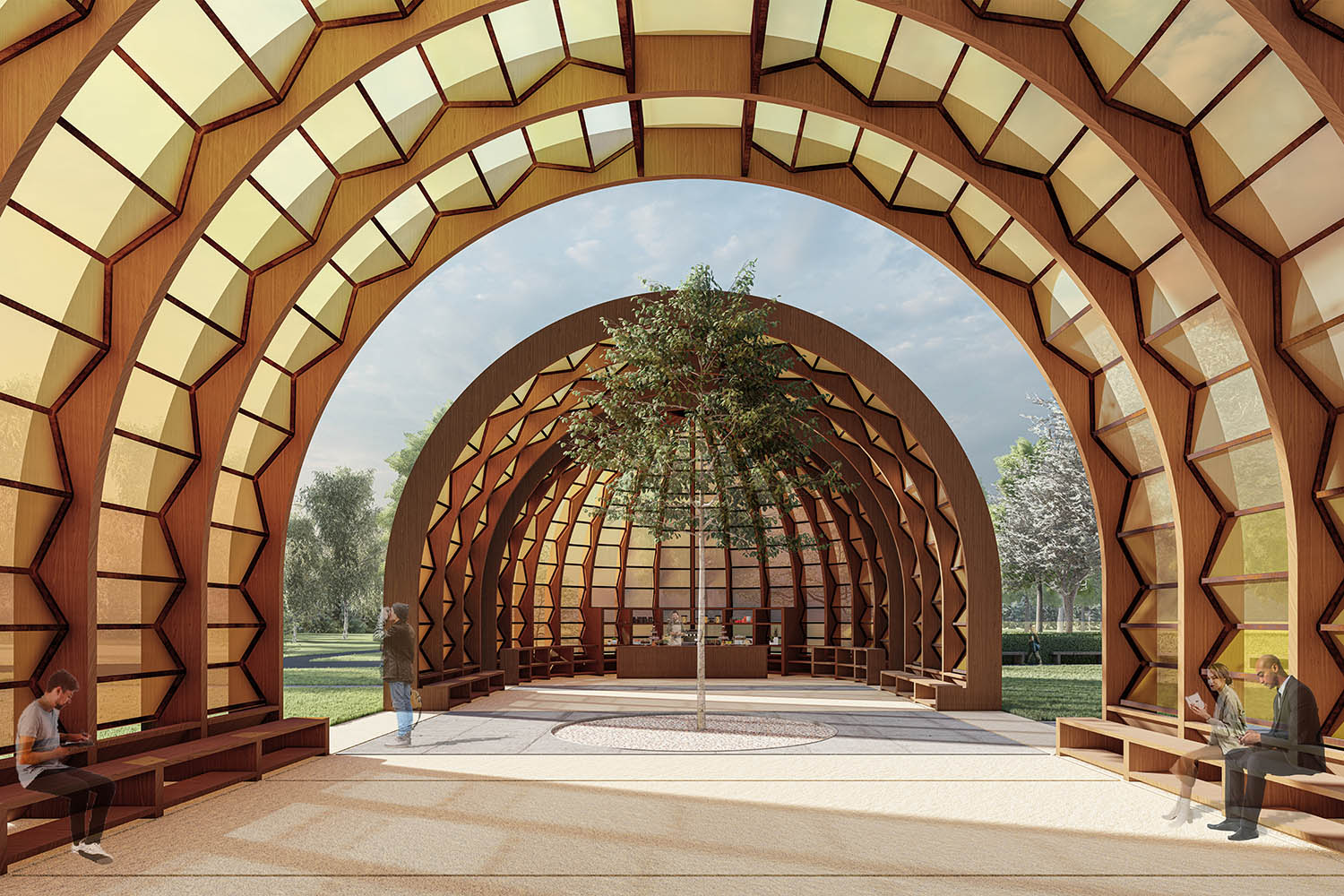
Her pavilion, called A Capsule in Time, is designed to celebrate the city’s “really nice and cheerful” summer. It’s a long half-cylinder, with a half-dome at each end, and a timber lattice structure and a translucent covering that will dapple and diffuse light. The shapes are monumental – forms you might find in ancient Roman baths and basilicas – but the inspirations are not. The pavilion is intended to evoke garden structures such as trellises and gazebos, and the tents and awnings in bamboo and fabric that you find in India, put up for weddings and gatherings. It will be, she says, a “singular space” that “embraces the park, and explores the edge of inside and out”. It will also have a middle section that moves, sliding back and forth to make the pavilion more or less open.
This combination of might and transience encapsulates Tabassum’s career. An early and enduring influence was the great American Louis Kahn, whose architecture of sonorous and timeless masonry, its openings cut with big circles and triangles, reached its apogee with the vast National Assembly building in Bangladesh’s capital, Dhaka, completed after his death in 1974. The work that made Tabassum’s name, the Bait Ur Rouf mosque in a fast-growing suburb in the same city, creates its beauty much as Kahn did out of the fall of light and shadow. The aim was to get back to what she sees as the essence of a mosque: a simple place of gathering, contemplative in nature.
Other projects are in a similar spirit, for example the Museum of Independence that also serves as a memorial to those killed in the 1971 war that led to the foundation of Bangladesh. A 12-storey residential tower called Comfort Reverie shelters its interiors from a busy road with angled blades of brick, striated with bands of concrete. This, too, has a certain heft and calm that sets it apart from its more trashily constructed neighbours, but also playfulness, the masonry bent and folded like unusually heavy origami. Tabassum’s buildings tend to be more earthily constructed than Kahn’s, typically using the rough brickwork that is commonplace in Bangladesh, its irregularities catching the fall of light.
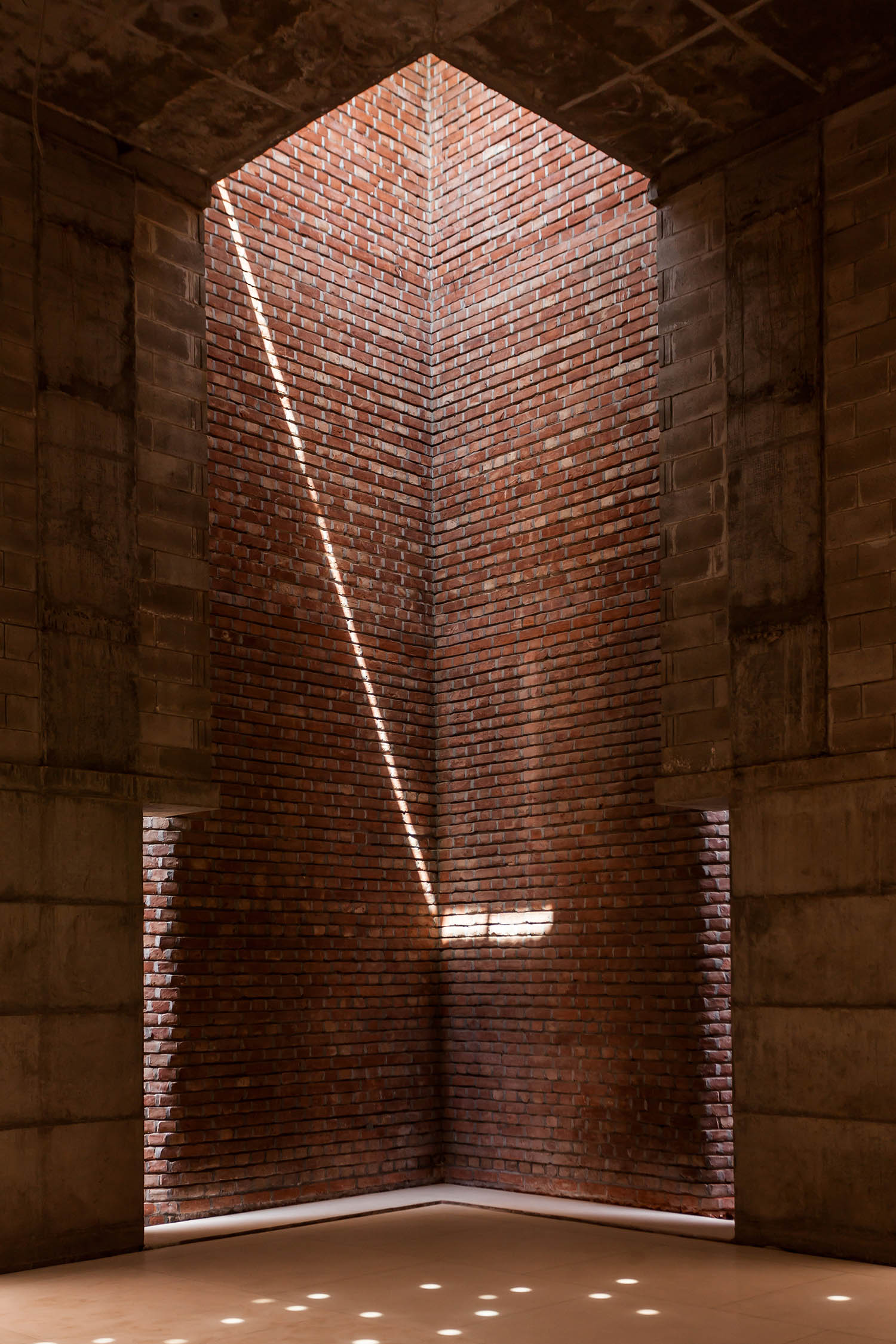
The other side to her work, for people in extreme need, also brings together geometry with local materials. Her Khudi Bari project developed a way of building basic houses for dwellers on flood-prone and constantly moving sand beds, using steel joints and locally grown bamboo in such a way that they can be easily taken down, moved and re-erected. It’s a structure of triangles, with the main space lifted above the ground, so that possessions can be saved when the waters rise. The total cost of materials is $450 for each unit, of which 65 have so far been built. Tabassum stresses that this concept is “not about giving away free stuff” but to empower people with the means to build their own homes.
‘There is an overproduction of buildings, but not for the people who really need them’
In the Kutupalong refugee camp for Rohingya refugees from Myanmar, which with more than a million inhabitants is one of the largest in the world, Tabassum and her office have used the same bamboo and steel system to build a women-led community centre. It enables them to create a second floor, which in a severely overcrowded place makes enough room for a small garden, as well as space for counselling, consulting and gathering, for childcare and breastfeeding, and a refuge from the camp’s unsafe networks of narrow alleys. The design also meets the authorities’ requirement that nothing in the camp be permanent, wishing as they do that it will one day go away.
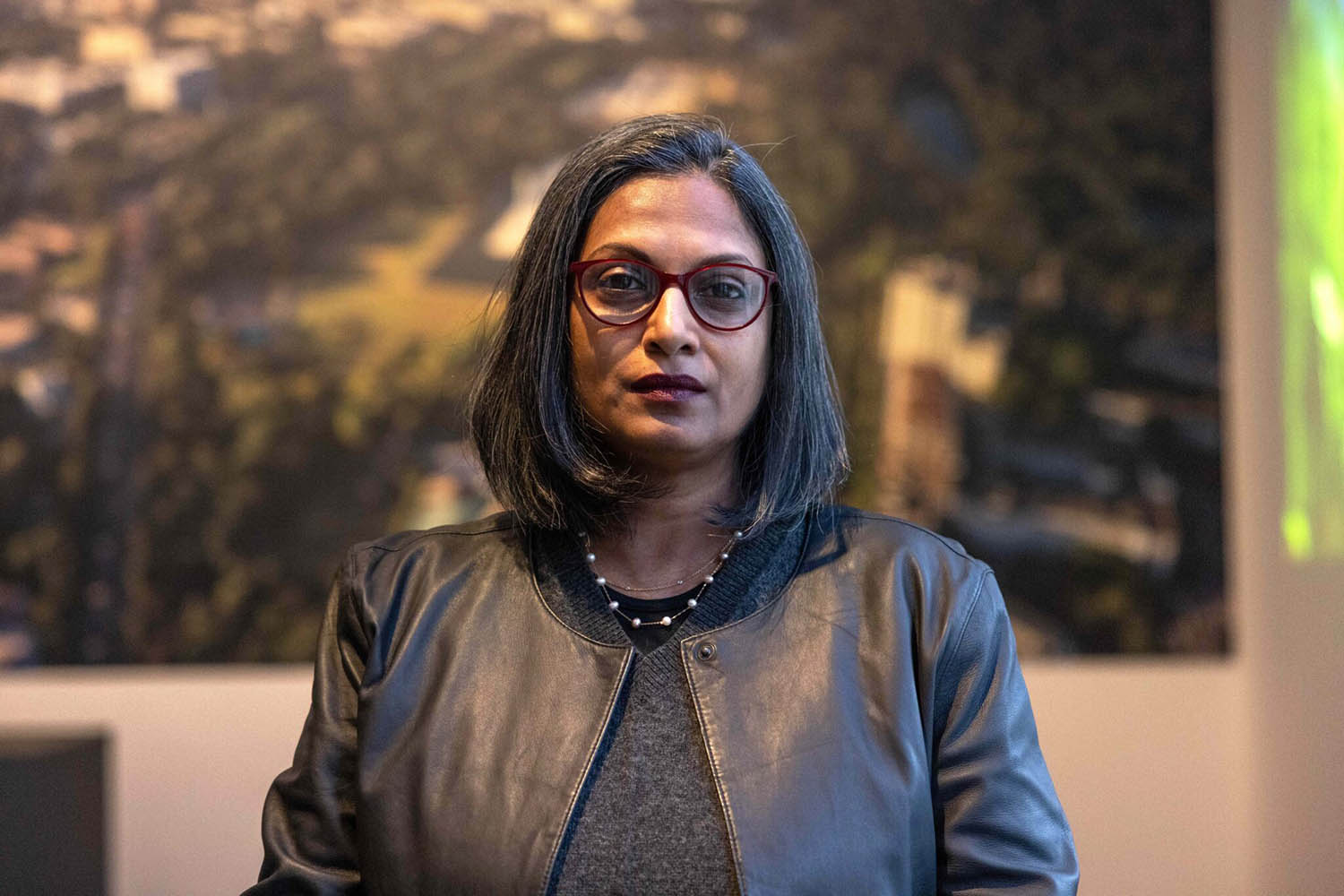
In these and other projects for the displaced, Tabassum and her practice don’t only do the conventional activities of architects, but also bring in help with setting up community savings groups to finance businesses and programmes for teaching new skills. Their buildings are co-designed with the people who will use them. All of which raises a question: what exactly does architecture, in the way that someone such as Kahn practised it, bring to the solution of urgent problems? Isn’t it just a matter of finding the most practical and cost-efficient means available?
Tabassum doesn’t see a conflict. People who live on the sandbeds, constantly having to move, “don’t usually invest a lot of energy into building something nice where they can raise a family”. This, to her, “felt not right, because you have children growing in the house”. Her hope for her Khudi Bari project is to combine mobility with dignity. “Even with small tiny houses,” she says, “everything is based in geometry.”
The Serpentine pavilion 2025 by Marina Tabassum will be open in Kensington Gardens, London W2 from 6 June to 26 October
Photographs by Asif Salman, © Marina Tabassum Architects, courtesy Serpentine, Hasan Saifuddin Chandan, Asif Salman
